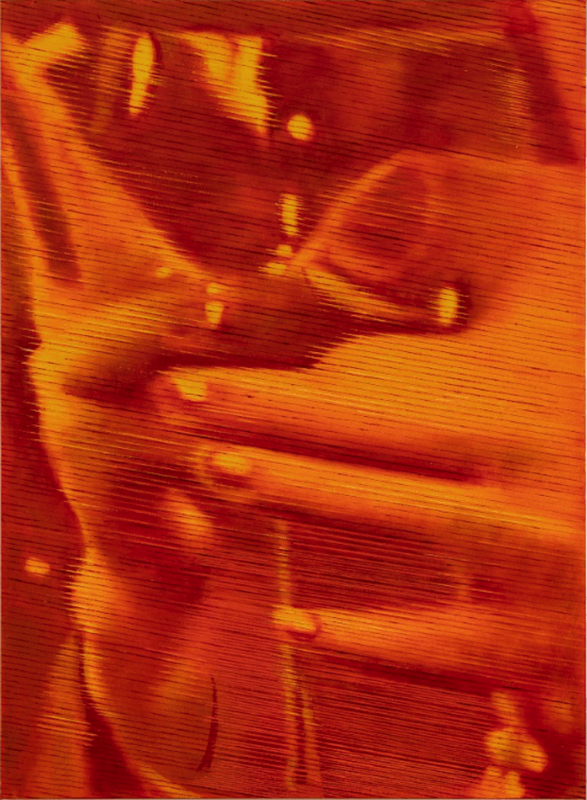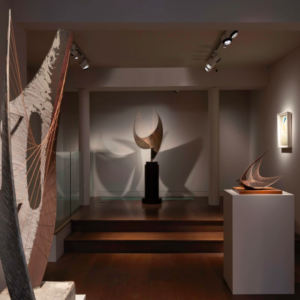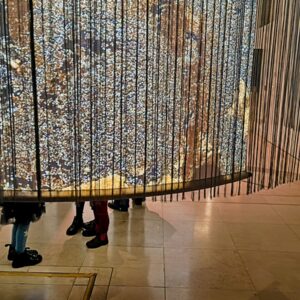
Art, in its myriad forms, has long held a profound place in human culture and expression. From the intricate strokes of a painter’s brush to the emotive power of a dancer’s movements, art has the ability to transcend boundaries and communicate on a deeply personal and universal level. The choice of art as a dissertation subject is a decision not only rooted in passion but one that carries immense significance.
This article is a comprehensive guide for aspiring researchers who seek to navigate the unique terrain of art-focused dissertations, offering valuable insights and advice to ensure success in their academic endeavors, with the help of dissertation writing service OxEssays. Art as a Dissertation Subject: Unlocking the Creative Canvas is an exploration of the journey that aspiring researchers undertake when they decide to immerse themselves in the world of art for their dissertations.
At its core, this article navigates the academic landscape where art becomes the focal point of rigorous research and intellectual inquiry. It is an ode to the myriad possibilities that art presents, inviting scholars to step into a world where creativity knows no bounds. Whether you’re a student in fine arts, art history, or any related field, the decision to choose art as your dissertation subject is a leap into a world where the conventional rules of academic research are often rewritten.
The significance of selecting art as a dissertation subject is multifaceted. Art embodies culture, history, and personal expression. It encapsulates the essence of humanity itself, transcending language and time. By choosing art as a subject, you not only contribute to the understanding and preservation of cultural heritage but also engage with contemporary issues through a unique lens.
Art has the power to evoke emotions, challenge norms, and provoke thought, making it an incredibly potent tool for academic exploration. Moreover, your dissertation in art has the potential to influence society, reshape perspectives, and inspire future generations of artists, scholars, and enthusiasts.
Advantages of Choosing Art as a Dissertation Subject
Art, with its vibrant and diverse forms, offers a wealth of advantages as a dissertation subject that extend far beyond the canvas or stage. In this section, we delve into the remarkable benefits of embarking on the journey of exploring art within the framework of academic research.
The heart of art lies in its ability to nurture creativity and provide an unparalleled avenue for self-expression. When you choose art as your dissertation subject, you step into a world where innovation knows no bounds. Unlike conventional academic disciplines, art does not confine you to rigid structures or predefined methodologies. Instead, it invites you to explore the uncharted territories of your own imagination.
In your dissertation, you have the freedom to create, to push the boundaries of what is known, and to challenge established norms. Whether you’re a visual artist experimenting with new techniques, a musician composing groundbreaking melodies, or a dancer exploring novel movements, art empowers you to convey ideas, emotions, and concepts that words alone cannot capture.
Art-related fields are rife with opportunities for groundbreaking research. The very nature of art is dynamic and ever-evolving, making it a fertile ground for innovation. Consider the possibilities: you might be researching the impact of technology on contemporary art, studying the historical evolution of a particular art form, or examining the sociocultural implications of a renowned artist’s work. It provides a thorough examination of the opportunities and obstacles faced by students pursuing artistic topics for their dissertations, offering insightful advice and guidance, as affirmed by the favorable UKWritings.com review by academic experts and scholars.
By delving into art for your dissertation, you position yourself at the forefront of creative inquiry. Your research could lead to fresh insights, the development of new artistic techniques, or a deeper understanding of the human experience through art. Art-based dissertations have the power to shape the trajectory of the art world and influence how we perceive and interact with creative expressions.
Art is a bridge that spans across various disciplines, connecting them in unexpected and enriching ways. When you choose art as your dissertation subject, you embark on an interdisciplinary journey that encourages you to draw from diverse fields such as psychology, sociology, anthropology, history, and science. Art acts as a unifying force, allowing you to incorporate different perspectives into your research.
For instance, an art dissertation might explore the intersection of neuroscience and aesthetics, shedding light on how our brains respond to art. Alternatively, it could delve into the environmental impact of artistic materials, linking art conservation with environmental science. The possibilities are as vast as your imagination.
Interdisciplinary research is a hallmark of the modern academic landscape. It enables you to approach complex issues from multiple angles, fostering a richer and more comprehensive understanding of your subject. When art serves as the centerpiece of your dissertation, you have the unique advantage of drawing from a diverse pool of knowledge.
Interdisciplinary research not only broadens your horizons but also equips you with valuable skills in collaboration, critical thinking, and problem-solving. Moreover, it opens doors to a broader audience for your work, as it can resonate with scholars and enthusiasts from various fields. In essence, choosing art for your dissertation invites you to become a boundary-crossing explorer of knowledge.
Passion is the driving force that propels you through the arduous journey of a dissertation. When you choose art as your subject, you’re not just engaging with academic rigor; you’re immersing yourself in something you genuinely love. This deep-seated personal interest becomes your unwavering motivation.
Unlike topics chosen purely for their academic merit, art resonates with your soul. It keeps you inspired and eager to delve deeper, even when faced with challenges. This emotional connection to your subject matter transforms the dissertation process from a mere academic exercise into a fulfilling and transformative experience.
Throughout the annals of academia, there are countless examples of remarkable dissertations that were fueled by unbridled passion. Consider the artist who explored the cultural nuances of identity through their paintings, the music enthusiast who uncovered the historical roots of a forgotten genre, or the dance aficionado who analyzed the embodiment of emotions through movement.
These dissertations stand as testament to the incredible feats that passion can inspire. They not only enriched the academic community but also left an indelible mark on their respective fields. Your personal investment in art as a dissertation subject not only sustains you but also has the potential to create a lasting legacy that resonates with others who share your love for artistic expression.
Challenges of Choosing Art as a Dissertation Subject
While the journey of exploring art as a dissertation subject is undeniably rewarding, it is not without its unique set of challenges. In this section, we will navigate the intricacies of these challenges and provide valuable insights and strategies to help you overcome them.
Art is inherently subjective, making it both a treasure trove of diverse perspectives and a potential minefield of challenges for researchers. When your dissertation revolves around art, you grapple with the inherent subjectivity of your chosen subject matter. What is aesthetically pleasing to one may not be to another, and the interpretation of a piece of art can vary widely among individuals.
As a researcher, you must contend with this subjectivity in your analysis and findings. This can lead to complexities in establishing objectivity and reliability in your research, which are typically highly prized in academia. Additionally, subjectivity can pose challenges when presenting your research, as your audience may have different interpretations and reactions to the art you are discussing.
To navigate the inherent subjectivity of art research, consider the following strategies:
- Establish clear criteria: Develop well-defined criteria for evaluating and interpreting art. This can help bring a level of objectivity to your analysis. For example, you might consider factors such as composition, color theory, historical context, and artistic techniques in your evaluation.
- Utilize diverse perspectives: Acknowledge the multiplicity of interpretations and engage with a range of perspectives. Incorporate the views of art historians, critics, artists themselves, and even the general public when discussing the significance and meaning of a particular artwork.
- Triangulation of data: To enhance the credibility of your findings, use multiple data sources and methods. This might include surveys, interviews with artists, and comparative analyses. By triangulating your data, you can offer a more robust and nuanced perspective on your chosen subject.
- Reflect on your own biases: Be aware of your own biases and preconceived notions. Keep a reflexive journal to record your personal reactions and interpretations, and analyze how these might influence your research. This self-awareness can help you maintain a degree of objectivity in your work.
Art research often requires access to specific resources, materials, and artworks. These resources can range from art collections and archives to specialized equipment and materials for creating art. Moreover, not all art is easily accessible, particularly if you are researching historical or rare pieces.
Financial constraints can also come into play, as procuring materials or gaining access to certain collections may incur costs. Limited access to art institutions, libraries, or research centers can pose challenges, especially if you need to examine specific artworks or documents.
To tackle resource constraints in art research, consider the following approaches:
- Collaboration: Partner with local art institutions, museums, or universities that may grant you access to their collections or resources. Collaborations can also open doors to networking opportunities and expert guidance.
- Apply for grants and funding: Explore grants, scholarships, and funding opportunities specifically tailored to art research. Many organizations and foundations offer financial support for art-related projects. Research these opportunities and submit well-crafted proposals.
- Utilize digital resources: Leverage the power of digital libraries, archives, and online databases. Many institutions have digitized their collections, making them accessible to researchers worldwide. Additionally, online forums and communities can be valuable sources of information and support.
- Adapt your research approach: If you encounter challenges in accessing specific artworks or materials, consider adjusting your research focus to explore more readily available resources. Flexibility in your research design can help you work around limitations.
One of the defining challenges in art-based dissertations is striking a harmonious balance between theoretical research and practical artistic work. While your research may involve critical analysis, historical context, and scholarly discussions, you must also engage in the creation of art as part of your dissertation.
This dual requirement can be challenging, as it demands different sets of skills, methodologies, and time commitments. Additionally, integrating theory and practice seamlessly is essential to ensure that your dissertation remains cohesive and meaningful.
To successfully integrate theory and practice in your art-based dissertation, consider the following insights:
- Develop a clear research framework: Begin by establishing a robust research framework that outlines the relationship between your theoretical research and artistic practice. This framework should define how theory informs your artistic work and vice versa.
- Create a schedule: Develop a detailed schedule that allocates specific time for both research and artistic creation. This schedule should accommodate the iterative nature of artistic work, allowing you to refine your creations as your research progresses.
- Feedback and reflection: Continuously seek feedback from mentors, advisors, and peers. Reflect on how your theoretical insights influence your artistic decisions, and vice versa. Incorporate feedback into both aspects of your dissertation to ensure alignment.
- Narrative cohesion: Pay attention to the narrative thread that weaves through your dissertation. Your theoretical insights should inform the context and meaning of your artistic creations, resulting in a cohesive and well-articulated dissertation.
- Document your process: Maintain thorough documentation of your artistic process, including sketches, drafts, and revisions. This documentation not only serves as a record but also allows you to reflect on the evolution of your art in response to your research findings.







